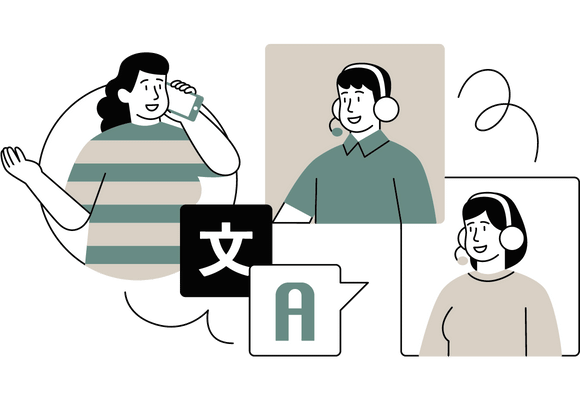
What Language Does Serbia Speak
Serbia is a Balkan country that shares borders with Hungary, Romania, Bulgaria, Macedonia, Croatia, and Montenegro. While the official language of Serbia is Serbian, there are also many other languages spoken in the country, including Hungarian, Romanian, Bulgarian, Macedonian, Croatian, and Montenegrin.
Serbian is a Slavic language that is similar to Russian and Polish. It is the official language of Serbia and is spoken by about 9.5 million people worldwide. Serbian is written in the Cyrillic alphabet, which is also used to write Bulgarian, Macedonian, and Russian.
Hungarian is a Uralic language that is spoken by about 10 million people worldwide. It is the official language of Hungary and is also spoken in parts of Serbia, Romania, and Slovakia. Hungarian is written in the Latin alphabet.
Romanian is a Romance language that is spoken by about 24 million people worldwide. It is the official language of Romania and is also spoken in parts of Serbia, Hungary, and Moldova. Romanian is written in the Latin alphabet.
Bulgarian is a Slavic language that is spoken by about 8 million people worldwide. It is the official language of Bulgaria and is also spoken in parts of Serbia, Greece, and Macedonia. Bulgarian is written in the Cyrillic alphabet.
Macedonian is a Slavic language that is spoken by about 2 million people worldwide. It is the official language of Macedonia and is also spoken in parts of Serbia, Bulgaria, and Greece. Macedonian is written in the Cyrillic alphabet.
Croatian is a Slavic language that is spoken by about 5.5 million people worldwide. It is the official language of Croatia and is also spoken in parts of Bosnia and Herzegovina, Serbia, and Montenegro. Croatian is written in the Latin alphabet.
Montenegrin is a Slavic language that is spoken by about 620,000 people worldwide. It is the official language of Montenegro and is also spoken in parts of Serbia and Bosnia and Herzegovina. Montenegrin is written in the Cyrillic alphabet.
Introduction to Serbia’s Language
Serbia is a Balkan country that shares borders with Hungary, Romania, Bulgaria, Macedonia, and Montenegro. Officially, Serbia has two languages: Serbian and Croatian. However, there are also other languages spoken in different parts of the country, including Hungarian, Romanian, Bulgarian, and Albanian.
Serbian is the national language of Serbia. It is a South Slavic language that is similar to Croatian and Bosnian. Serbian is written in the Cyrillic alphabet.
According to the 2011 census, Serbian is the mother tongue of 83.3% of the population of Serbia. Croatian is the mother tongue of 4.4% of the population, and Bosnian is the mother tongue of 2.3% of the population. Hungarian is the mother tongue of 3.3% of the population, Romanian is the mother tongue of 2.2% of the population, Bulgarian is the mother tongue of 1.5% of the population, and Albanian is the mother tongue of 1.1% of the population.
The Official Language of Serbia
Serbian is the official language of Serbia. It is a Slavic language and is similar to Croatian and Bosnian. Serbian is spoken by about 8 million people worldwide.
The Serbian language has its own alphabet, which uses both Cyrillic and Latin script. The Cyrillic alphabet is used in Serbia, while the Latin alphabet is used in Bosnia and Herzegovina and other countries.
Serbian is a difficult language to learn, but it is very rich in vocabulary. The grammar is also very complex. However, the language is gradually becoming more popular, and there are now many language learning resources available.
Serbian is the primary language spoken in Serbia. However, there are also other languages spoken in the country, including Hungarian, Romanian, Slovak, and Rusyn.
Other Languages Spoken in Serbia
Serbia has two major languages: Serbian and Montenegrin. There are also several other minority languages spoken in Serbia, such as Bosnian, Croatian, and Romanian.
Serbian is the official language of Serbia. It is a Slavic language, and is similar to Croatian and Bosnian. Montenegrin is the official language of Montenegro, but is similar to Serbian.
Bosnian, Croatian, and Romanian are all minority languages spoken in Serbia. They are all Indo-European languages, and are similar to each other.
Serbian Dialects
Serbian is the official language of Serbia, but there are several dialects spoken in the country. The most common dialect is Štokavian, which is the basis for the standard Serbian language. Other dialects include Torlakian and Kajkavian.
The Štokavian dialect is spoken in most of Serbia, Montenegro, Bosnia and Herzegovina, and Croatia. It is the most widely spoken dialect in the Balkans. There are several sub-dialects of Štokavian, including Kajkavian, Ekavian, and Ijekavian.
The Torlakian dialect is spoken in the southern part of Serbia, and is considered to be a transitional dialect between Štokavian and Bulgarian.
The Kajkavian dialect is spoken in northern Croatia and is considered to be the most archaic of the Slavic dialects.
The Ekavian dialect is spoken in central Serbia, and is considered to be the most prestigious dialect of Serbian.
The Ijekavian dialect is spoken in western Bosnia and Herzegovina, and is considered to be the most literary of the Serbian dialects.
History of Serbian Language
Serbian is the language spoken in Serbia. It is one of the official languages of the country, along with Croatian and Bosnian.
Serbian is a Slavic language, and is related to other Slavic languages such as Russian, Polish, and Czech. It is also similar to Bulgarian and Macedonian.
The Serbian language first appeared in writing in the 12th century. It was used in religious texts and poetry. It was not until the 19th century that the Serbian language began to be used in a more widespread way.
Serbian is currently spoken by around 9 million people. It is the official language of Serbia, as well as Kosovo and Montenegro. It is also spoken in other countries, such as the United States, Australia, and Canada.
Learning Serbian Language
Serbian is the official language of Serbia. It is a Slavic language and is similar to Croatian and Bosnian. It is spoken by about 9 million people. Serbian is written in the Cyrillic alphabet.
There are several dialects of Serbian, but the standard language is based on the Zagreb dialect. Serbian is a difficult language to learn, but there are many online resources to help you.
There are many ways to learn Serbian. You can find Serbian language classes in your area, or you can learn online. There are also many online dictionaries and translation tools available.
Serbian is the official language of Serbia. It is a Slavic language and is similar to Croatian and Bosnian. It is spoken by about 9 million people. Serbian is written in the Cyrillic alphabet.
There are several dialects of Serbian, but the standard language is based on the Zagreb dialect. Serbian is a difficult language to learn, but there are many online resources to help you.
There are many ways to learn Serbian. You can find Serbian language classes in your area, or you can learn online. There are also many online dictionaries and translation tools available.
Importance of Serbian Language
Serbian is the official language of Serbia. It is also spoken in Bosnia and Herzegovina, Montenegro and Croatia. Serbian is a member of the South Slavic group of languages. It is written in the Cyrillic alphabet.
Serbian is an important language in the Balkans. It is the mother tongue of around 10 million people. Serbian is also an important language for business and diplomacy. It is one of the official languages of the United Nations.
Conclusion
Serbia is a country located in the Balkans region of Europe. The official languages of Serbia are Serbian and Bosnian. Serbian is the predominant language spoken in Serbia, while Bosnian is spoken in the Republika Srpska entity of Bosnia and Herzegovina. Other languages spoken in Serbia include Croatian, Montenegrin, and Romanian.
